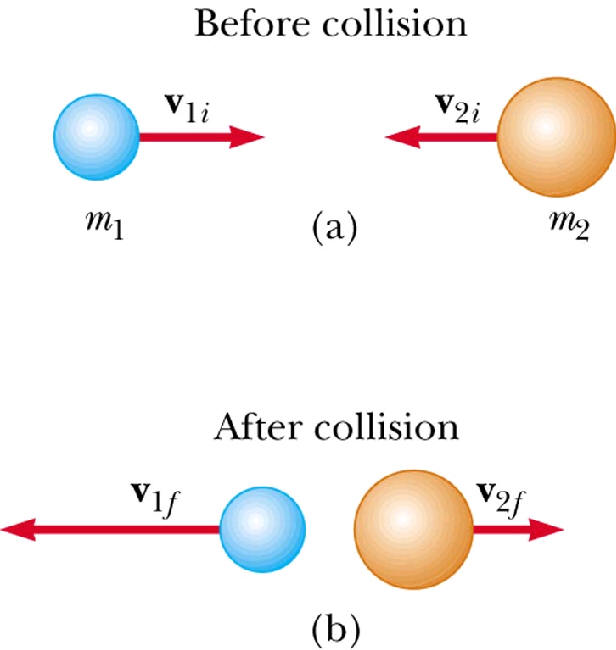Collision

Momentum is one
of the two properties of motion needed to
determine the velocity of objects after a
perfectly elastic collision. The other
property is kinetic energy, which is also
conserved in perfectly elastic collisions.
Using the following
equations, the velocities of particles
after a head-on collision can be
determined from the starting velocities
and the masses.
The top equation is for the conservation
of momentum and the bottom equation is for
the conservation of kinetic energy.
m1v1i+m2v2i=m1v1f+m2v2f
.5*m1(v1i)2+.5*m2(v2i)2=.5*m1(v1f)2+.5*m2(v2f)2
|

http://titan.bloomfield.edu/facstaff/dnicolai/Physics/Physics105/Phy105-lessons/lesson6-105.htm
|
Momentum also plays a major role in
perfectly inelastic collisions also, especially
when one mass starts at rest.
an example of this: A .03 kg bullet is fired
at 300. m/s at a 10. kg wood block. When the
bullet makes contact with the block, it is
lodged. To determine the final velocity of
the block and bullet combined we use the formula vf=(m1vi)/(m1+m2)
which is a rearrangement of the law of
conservation of momentum. Using this
formula, the final velocity is equal to vf=(.03*300)/(10.+.03)
which is equal to .90 m/s.
|